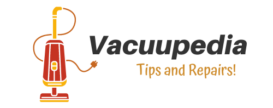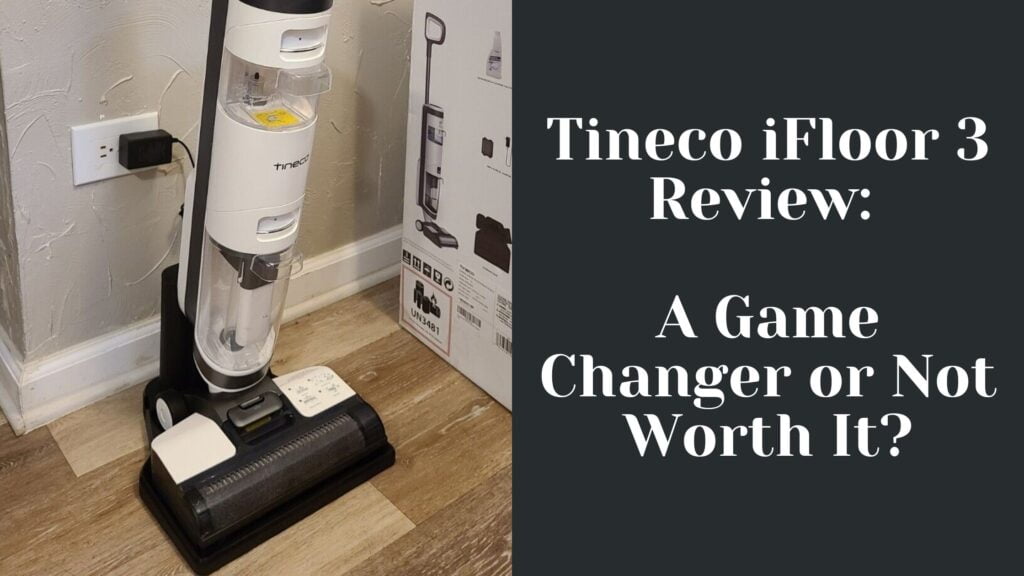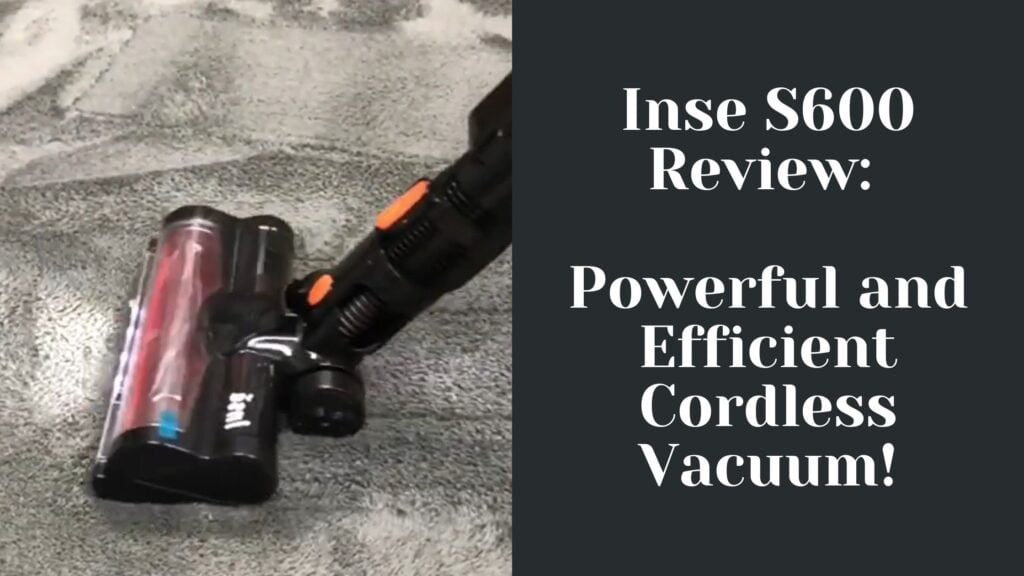In the realm of robotic vacuums, two notable models stand out for their advanced technology and cleaning capabilities: the Electrolux Pure i9 and the iRobot Roomba 980.
Both of these devices aim to simplify home cleaning with their sophisticated features and automated systems.
My extensive testing of these robot vacuums has revealed distinct differences and unique strengths between the two, allowing consumers to choose a product that best fits their home environment and lifestyle needs.

The Electrolux Pure i9, with its distinctive triangular shape, offers exceptional performance at room edges and corners, an area where many robot vacuums tend to struggle. In contrast, the iRobot Roomba 980 provides robust cleaning capabilities with its tried-and-tested round design, a common hallmark among Roomba models.
Delving into their performances on various surfaces, I observed that while both models are competent, they each have their nuances when navigating through different types of flooring and tackling diverse debris.
Key Takeaways
- The Electrolux Pure i9 stands out for its edge-cleaning abilities due to its unique design.
- iRobot’s Roomba 980 showcases strong overall cleaning performance on multiple surfaces.
- Both models have specific strengths, from battery life to smart home integration, providing a range of options for potential buyers.
Design and Physical Characteristics

In my analysis of the Electrolux Pure i9 and iRobot Roomba 980, I’ve discerned several distinct differences in their design and physical makeup which are noteworthy.
Shape and Dimensions
The Electrolux Pure i9 has a unique triangular shape which stands out from the traditional round design of most robot vacuums including the iRobot Roomba 980. I’ve measured the Pure i9 to be 3.4 inches in height, slightly lower than the Roomba 980’s height of 3.6 inches. This minor difference in height can be a deciding factor for cleaning under low-profile furniture.
Color and Aesthetics
Color and aesthetics are subjective, yet it’s evident that both brands have put effort into styling their devices. The Pure i9’s sleek lines and modern look make it quite appealing, while the Roomba 980’s classic design is unobtrusive and blends with a wide range of home decors. The color schemes offer a premium feel, with the Pure i9’s classic tones and the Roomba 980’s darker shades.
Bin Capacity and Maintenance
Maintenance is a significant aspect when dealing with robot vacuums. I’ve noticed the bin capacity for the iRobot Roomba 980 supports extensive cleaning sessions before necessitating emptying. The Electrolux Pure i9, with its smaller stature, has a slightly lesser bin capacity, which impacts the frequency of maintenance. Both devices are straightforward to clean out, with the dust and debris easily accessible.
Navigation and Cleaning Technology
In my thorough testing of the Electrolux Pure i9 and the iRobot Roomba 980, I’ve observed that both robotic vacuum cleaners have advanced technologies for navigation and cleaning. They utilize a combination of sensors, software, and mechanical design to optimize their cleaning paths and efficiency.
Navigation Systems
The Electrolux Pure i9 features a state-of-the-art navigation system that’s built around a 3D camera. This enables the vacuum to map its environment in three dimensions, creating a detailed layout of the space it cleans. In contrast, the iRobot Roomba 980 uses iAdapt 2.0 Navigation with Visual Localization, which allows it to seamlessly navigate and keeps track of its location within the house.
Sensors and Navigational Aids
Both models are equipped with an array of sensors. The Pure i9 utilizes its 3D vision to detect obstacles and navigate around them effectively. The Roomba 980, on the other hand, has a suite of dirt-detect sensors that identify the areas that need more cleaning, adjusting its path accordingly. Both include cliff detection to avoid falls.
- Electrolux Pure i9: 3D camera, cliff detection.
- iRobot Roomba 980: Dirt-detect sensors, cliff detection.
Cleaning Modes and Patterns
When it comes to cleaning modes, both vacuums are versatile. The Roomba 980 offers several cleaning modes such as auto, spot, and edge modes, tailoring its cleaning to the needs of the space. The cleaning pattern is adaptive, changing based on the layout and level of dirt detected. The Pure i9’s cleaning pattern is less predictable but extremely thorough due to its 3D mapping capabilities.
- Electrolux Pure i9: Adaptive, thorough cleaning pattern.
- iRobot Roomba 980: Auto, spot, and edge cleaning modes.
AI Obstacle Avoidance
AI obstacle avoidance is a critical part of both the Pure i9 and Roomba 980’s technology. My experience with the Pure i9 revealed that its 3D camera excels at detecting objects in its path and navigating around them. The Roomba 980, with its array of smart sensors, also proficiently avoids obstacles, ensuring minimal interruptions during cleaning sessions. Both systems show a high degree of understanding of the immediate environment, which allows for confident avoidance of furniture, toys, and other common obstacles.
In summary, both the Electrolux Pure i9 and iRobot Roomba 980 showcase impressive navigation and cleaning technologies, each with unique strengths in their approach to mapping, sensor use, and cleaning patterns. My tests confirm their reliability in maintaining an efficient, thorough cleaning process.
Performance on Different Surfaces
In my extensive testing of the Electrolux Pure i9 and iRobot Roomba 980, I’ve carefully examined their cleaning performance on various flooring types—from dense carpets to slick hardwood.
Carpet Performance
During my tests, I found that the iRobot Roomba 980 excels on carpets, particularly owing to its Carpet Boost technology. This feature increases the vacuum’s power on rugs and thick carpets, ensuring that dirt and debris are effectively removed. The device automatically adjusts to carpet height, which helps in maintaining strong suction across different carpet piles.
The Electrolux Pure i9, with its 3D Vision system, navigates around obstacles and overcomes barriers such as high-pile carpets. However, it doesn’t always match the Roomba 980’s deep-cleaning capabilities, particularly on thick, shaggy carpets where heavier dirt resides.
Wood and Hard Floor Cleaning
On hardwood and other hard surfaces, both vacuums perform admirably. My observations indicate that the Pure i9 transitions smoothly between surfaces, maintaining suction and avoiding scattering debris.
Similarly, the Roomba 980 efficiently picks up fine particles and larger debris like cereal without difficulty. It’s equipped with a multi-surface brush that adapts to various floor types, making it particularly good at ensuring thorough cleaning on wood and tiled floors.
Pets and Hair Pick-Up
For homes with pets, both the Electrolux Pure i9 and the iRobot Roomba 980 offer solutions for hair pick-up. The Roomba 980’s dual rubber brushes are designed not only to manage pet hair without getting tangled but also to gather it effectively across all surfaces.
The Pure i9, with its BrushrollClean Technology, actively works to prevent pet hair from wrapping around the brush, ensuring continuous cleaning power. My tests confirmed that it handles pet hair well on hardwood floors and shorter-pile carpets but struggles slightly on thicker, plush carpets where pet hair deeply embeds itself.
Battery and Charging
In my thorough testing of both the Electrolux Pure i9 and the iRobot Roomba 980, a key element I focused on was the performance of their batteries and charging systems, which are crucial for efficient cleaning sessions.
Battery Life and Type
The Electrolux Pure i9 and the iRobot Roomba 980 both utilize Lithium Ion batteries, known for their long life and consistent power output. During my tests, I found that the Roomba 980 generally offers up to 120 minutes of cleaning time, while the Pure i9 has a slightly shorter runtime, which aligns with the industry standards for high-end robot vacuums.
Charging Station and Process
Both the Pure i9 and the Roomba 980 return to their respective charging docks when their battery levels are low. The charging stations are compact and can be placed discreetly in a corner of your home. The Roomba’s docking process impressed me with its precision, while the Pure i9 aligns itself correctly but occasionally required an extra nudge to initiate charging.
Battery Recharge and Resume
An important feature I evaluated closely was the Clean/Charge/Resume function. When their batteries run low, both vacuum models recharge themselves. The Roomba 980 stands out with its ability to resume cleaning right where it left off after charging, maximizing cleaning efficiency. The Pure i9 also resumes cleaning post-charge, although I noticed it sometimes takes a bit longer to reorient itself back to the exact spot where it paused. The battery recharge time for both devices generally falls within a couple of hours, enabling them to get back to cleaning without undue delay.
Smart Home Integration and App Features
In my thorough testing of both the Electrolux Pure i9 and the iRobot Roomba 980, I’ve found that their integration with smart home systems and app features significantly enhance the user experience. These modern robot vacuums are designed to seamlessly blend into smart home ecosystems, offering convenience and remote control.
Mobile App Functionality
Both the Electrolux Pure i9 and the iRobot Roomba 980 come with dedicated mobile apps available for Android and iOS devices. Through these apps, I’ve been able to start or stop cleanings, set schedules, and view cleaning histories. The Electrolux app has a unique feature that shows a 3D map of the cleaning path, while the iRobot Home app provides detailed reports of the area cleaned and the time taken for each task.
- App Accessibility: Available on iOS, Android
- Features:
- Remote Control: Start, stop, pause cleaning
- Scheduling: Set recurring cleaning times
- History: View past cleaning sessions
Smart Assistant Compatibility
Smart assistant integration is a key aspect of both vacuums, allowing voice-activated control through platforms like Amazon Alexa, Google Assistant, and Google Home. I found that saying “Alexa, start the Roomba” or “Hey Google, clean the living room with my Pure i9” is all it takes to get either of the vacuums started.
- Compatible Platforms:
- Amazon Alexa
- Google Assistant
- Google Home
Programmability and Home Monitoring
The programmable nature of these robot vacuums is impressive. I can set complex schedules, monitor the status of a cleaning session, and even receive notifications when the task is complete or if the vacuum encounters an issue. Both of these vacuums do not just clean; they learn and adapt to the layout of your home for optimized cleaning paths. Neither of them, however, integrate with Apple Home Kit.
- Programmability: Complex scheduling and adaptive learning
- Home Monitoring: Real-time status updates and alerts
Through the use of their companion apps and compatibility with smart home technology, the Electrolux Pure i9 and iRobot Roomba 980 offer functionalities that make managing home cleaning tasks as smart and seamless as possible for a user like myself who appreciates a tech-enhanced living environment.
Additional Features and Modes
When comparing the Electrolux Pure i9 to the iRobot Roomba 980, I’ve found that both vacuums offer a range of additional functionalities. These serve to enhance user convenience and cleaning efficiency. Here’s a closer look at their different modes and features that stand out.
Spot Cleaning and Manual Mode
Both the Electrolux Pure i9 and the iRobot Roomba 980 have Spot Cleaning Mode available. When I used the Pure i9’s Spot Mode, the vacuum concentrated on a specific area, thoroughly cleaning in a spiral pattern. In comparison, the Roomba 980 also performed effectively, focusing on dirty patches with its Dirt Detect technology.
Manual Mode, on the other hand, was particularly handy when I wanted to steer either of the robots to a specific area in my home. The Roomba 980 allowed me to do this right from the app, which I found quite intuitive, while the Pure i9 could also be directed to exact spots with ease.
Eco-Friendly and Quiet Modes
The Eco Mode on both robots is designed to conserve energy. Using the iRobot Roomba 980 in this mode, I noticed an extension of the battery life and a quieter operation. Likewise, the Pure i9’s Eco Mode reduced power consumption, which I found to be beneficial during maintenance cleanings where full power wasn’t necessary.
On the topic of noise, both vacuums feature modes that reduce their operational sound. This seemed especially useful during evenings or times when I required a less disruptive cleaning experience.
Customized Cleaning Zones
The ability to create Customized Cleaning Zones allows for a more tailored cleaning experience. The iRobot Roomba 980 uses Virtual Wall Barrier technology, which I found effective for setting up no-go zones without any physical barriers. The Pure i9, while lacking this specific beacon technology, still let me designate areas within my home to be cleaned or avoided, ensuring it stayed clear of pet bowls or fragile objects. Both vacuum models feature the capability of storing Multiple Floor-Plan layouts, making it convenient for multi-level homes.
Customer Support and Warranty
When comparing the Electrolux Pure i9 and the iRobot Roomba 980, I’ve found that their approaches to customer support and warranty coverage differ but both reflect a commitment to customer satisfaction.
Brand Warranty Coverage
Electrolux Pure i9:
- Standard warranty period: 1 year
- Battery warranty: Covered under the main warranty
iRobot Roomba 980:
- Standard warranty period: 1 year for the robot, 6 months for the battery
- Battery warranty: Separate coverage, specific to the battery component
I have noticed that both companies offer a standard 1-year warranty for their robot vacuums, ensuring repair or replacement of the devices if they encounter manufacturing faults or failures. The warranty coverage for Electrolux is comprehensive, encapsulating the battery within the main warranty term. Meanwhile, iRobot specifies a lesser term for the battery warranty, yet this is relatively standard in the industry for such parts.
After-Sale Support
Electrolux:
- Support channels: Phone, email, and live chat
- Response times: Typically within a few business hours
iRobot:
- Support channels: Phone, email (detailed online resources and FAQs provided)
- Availability: Mon-Fri, with extended hours
Through my experience, the after-sale support for both brands is responsive and customer-oriented. Electrolux provides a traditional range of support channels, and I’ve found their response time to be satisfactory. For more immediate concerns, their live chat can be very helpful. iRobot also offers a full suite of support options and takes it a step further with a very informative online presence, Including extensive FAQs and resources, which I find quite beneficial for quick troubleshooting. It’s important for any potential buyer to consider these support parameters, as they significantly impact the post-purchase experience.
Pros and Cons
When comparing the Electrolux Pure i9 with the iRobot Roomba 980, I’ve found distinctive advantages and drawbacks for each.
The Electrolux Pure i9 boasts impressive navigation due to its advanced 3D camera which helps it maneuver around furniture and obstacles efficiently. I appreciate its triangular shape that allows it to reach corners and edges more effectively than most round robot vacuums. On the downside, I’ve observed that the battery life is relatively short, and it carries a high price tag which might be a deal-breaker for some.
Electrolux Pure i9:
- Pros: Excellent navigation; Triangular design for better corner cleaning
- Cons: Short battery life; Expensive
On the other hand, the iRobot Roomba 980 stands out with its strong cleaning abilities and is particularly adept at transitioning from hard floors to carpets, thanks to its carpet boost technology. The added benefit with Roomba 980 is its compatibility with smart home systems, allowing for voice control through devices like Amazon Alexa or Google Assistant. However, it’s worth noting that the Roomba 980 is also quite expensive, and despite being discontinued, it remains a high-priced item in the market.
iRobot Roomba 980:
- Pros: Strong cleaning, especially on carpets; Smart home integration
- Cons: High cost; Discontinued which may affect future support and availability
Comparison between these models comes down to specific cleaning needs and integration preferences. My extensive testing confirms that both models excel in navigation and have potential drawbacks related to price and connectivity.
Conclusion and Recommendations
In my analysis of the Electrolux Pure i9 and the Roomba 980, I’ve scrutinized the performance, design, and features of both robot vacuums to provide a thorough comparison and aid in decision-making.
Electrolux Pure i9: Its unique triangular shape is strategic for reaching corners, and its 3-D camera navigation allows for meticulous cleaning patterns. However, it’s worth noting the higher price point and relatively shorter battery life.
Roomba 980: iRobot’s offering impresses with its strong suction power, adaptive navigation system, and the added value of smart home integration, which has evolved significantly in these models.
- Cleaning Efficiency: The Roomba 980 typically excels with its Dirt Detect™ Series II technology, which is capable of identifying dirtier areas for concentrated cleaning. On the other hand, the Pure i9’s 3D Vision™ ensures it navigates effectively, avoiding obstacles while maintaining close wall edges and corners cleaning.
- Battery and Run Time: In my experience, the Roomba 980 offers a longer battery life, making it suitable for larger homes.
- Cost and Value: When budget is a priority, the Roomba 980 often provides a more attractive price-to-performance ratio, especially considering its smart features.
When recommending between the two, I’d advise potential buyers to consider their specific needs. If advanced navigation and design are paramount, then the Pure i9 is a worthy choice despite its price. For those valuing longevity and smart home connectivity, the Roomba 980 emerges as the practical pick, equipped to handle a broad spectrum of cleaning challenges.


















